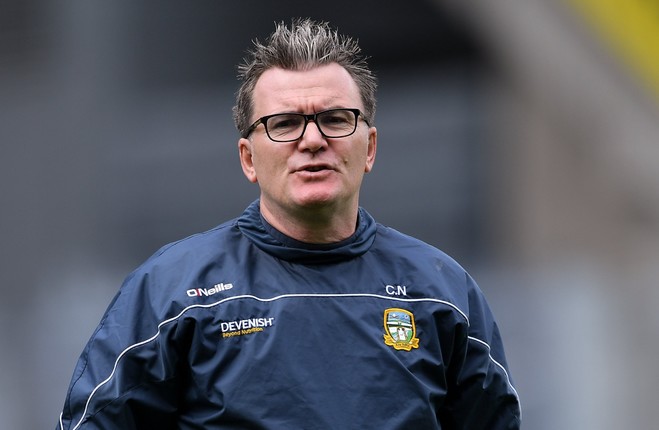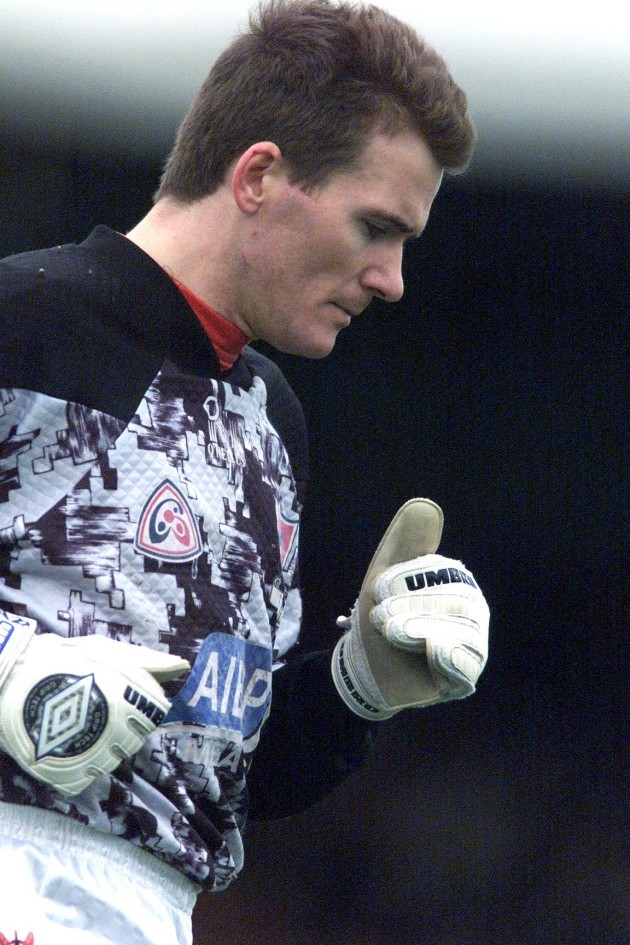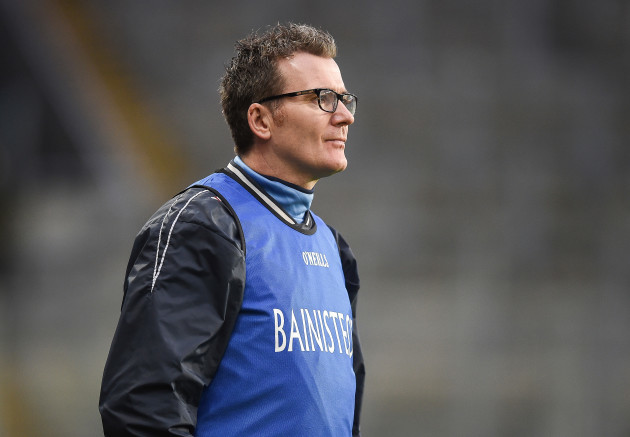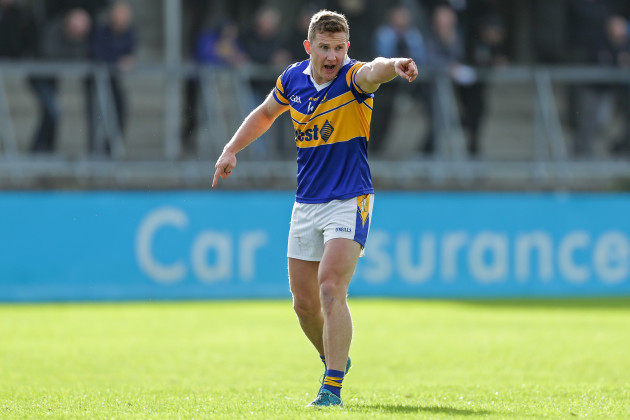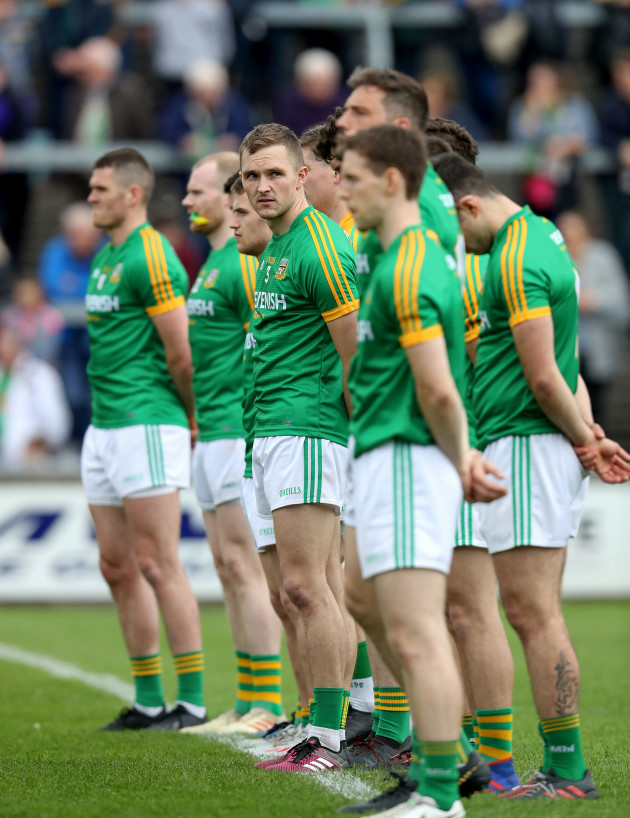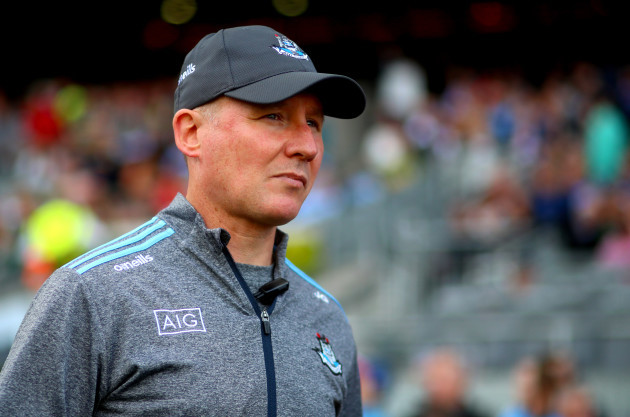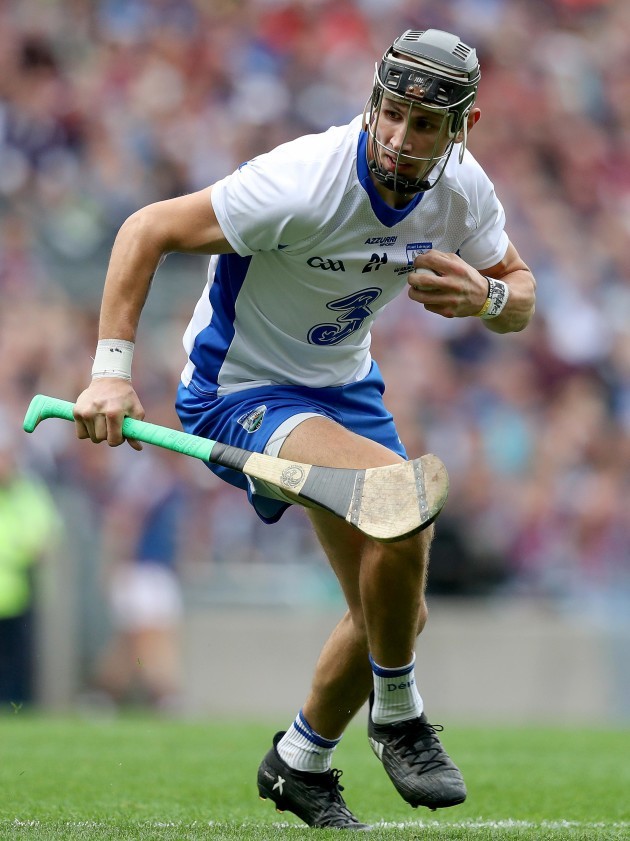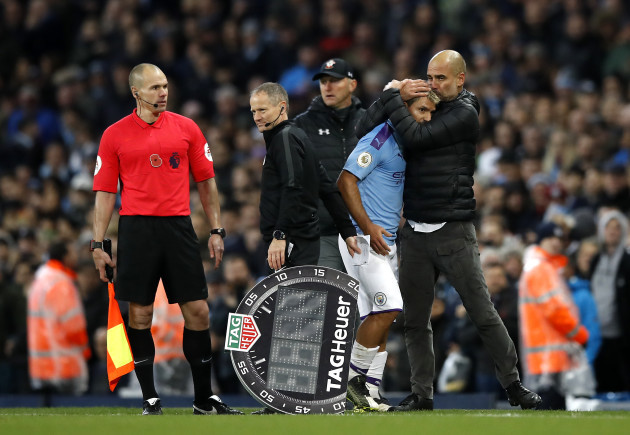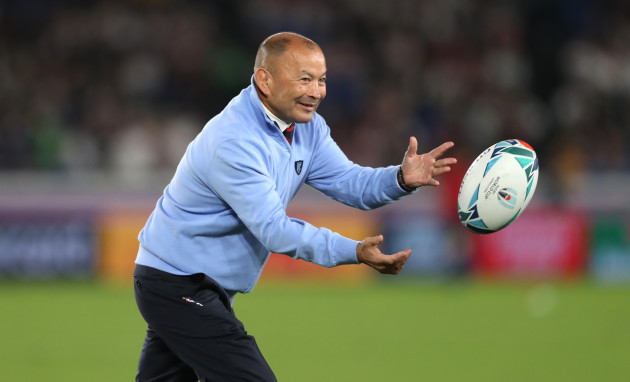THE COACH HAS become an integral part of inter-county backroom set-ups and they work closely with players on the training field, while also heavily influencing the team’s style of play.
Having a good coach in place is almost as important as the manager himself in the modern game, given all the other responsibilities the bainisteoir must also juggle.
This two-part series aims to learn about the modern inter-county coach – their playing careers, what inspired them to take up coaching, the biggest lessons they learned along the way – and to bring us inside the dressing room.
Next week, we’ll talk to Wexford hurling coach Seoirse Bulfin, but first up is Meath football’s Colm Nally.
A native of the O’Dwyer’s club in Balbriggan, north Dublin, Nally was a goalkeeper during his playing days. He was on the Dublin minor and U21 panels and spent a brief period as backup goalkeeper with the senior side.
After getting married in 1996, Nally moved to Drogheda and a year later transferred to his new wife’s local club Newtown Blues.
He lined out with Louth at senior level, winning the Division 2 title in 2002, and became heavily involved in underage coaching with the Blues. A self-confessed coaching nerd, Nally enjoyed tremendous senior success as manager of Newtown Blues, before leading Meath’s Colmcilles to the All-Ireland club intermediate final in 2017.
He managed Dublin SFC side Castleknock in 2018 and has worked closely with Andy McEntee as the Meath coach for the past two seasons. Nally also wrote a Gaelic football coaching manual and regularly posts training exercises and drills on his Youtube channel and Twitter page.
*************************
1. Most coaches will say that nothing beats playing, but you’ve said the opposite is true in your case. Do you still feel that way?
“Yeah, I do. Maybe I wasn’t a great player. See I was a goalkeeper. I suppose at that stage if you were really any good they’d have you out the field. I was always in the goals. There were times I didn’t enjoy it.
“I love nothing more than getting down early, setting up the training sessions. That’s my engagement with the players. That’s my hour and a half with the players. I’d say very little now in dressing rooms because I do all the talking on the pitch on a Tuesday, Thursday and Saturday.
“That’s my thing, I love that – trying to come up with stuff that’s transferrable to the games that we’ll play.”
2.What was the highlight of your playing career?
“Winning Division 2 with Louth in Croke Park. We beat Offaly. Vinny Claffey was playing. To win that with a bunch of lads that were young – I was 29 at the time – it was great. For me, coming from the experience of playing with Dublin underage and playing with O’Dwyers, you never think you’re going to get a chance to win a national title in Croke Park.”
When Nally broke onto the O’Dwyers team as a young goalkeeper, he played alongside Sky Blues legend John O’Leary who played outfield for the club.
3. What was the biggest lesson from your playing career that you still use now?
“People talk about kick-outs and how they’ve evolved but they’re still based around movement. I remember I used to watch John O’Leary and I’d think that he sliced the ball.
“But he told me that he was slicing the ball on purpose. I get that now when I’m older, I can see what he was trying to do. He was trying to disguise a kick-out. All kick-outs are based on movement.
“The biggest thing I’d be saying to players is about movement and how it creates a reaction. Sometimes you have to move two or three lines ahead.
“We could be putting down a kick-out now but you still want your full-forwards moving. Too many teams are static. A couple of things I always take with me is head-up football – getting your head up – and movement.
“They’re the two keys, that’d be paramount in all my coaching sessions be it with young players or old players.”
4. Was there a particular moment when you knew you wanted to be a coach?
“Back when I was playing with O’Dwyers there were times, I don’t want to be naming names, but it was more because of how badly things were done than inspired me. I was saying, ‘Jesus, surely we can do better than just running around cones in straight lines and queuing up for ages.’
“I still have my diary that I kept from my early coaching days. I used to jot down training sessions and diagrams going back to ’93, ’94. I still have it and it’s fascinating to look back and see how much it’s changed.
“That’s when I started that diary and it’s more based that most of the training was dreadful. For instance, there was no goalkeeping training. Everybody ran around the field – this used to drive me nuts - in pairs, touching left hand on the ground, touching right hand on the ground, jumping.
“All that sort of stuff. I used to say to myself, ‘Can we not do this sort of stuff with the ball?’ I was probably a bit of a pain to the coaches but that’s when I started thinking I had a bit of interest in this.”
5. Are you still a big notetaker?
“I have a notepad in the sitting room and a notepad in my bedroom. I bring this (notepad) with me everywhere. Just jotting things down all the time, even quotes.
“See, if we played a game and we couldn’t break down a certain set-up of defence, it would be on my mind going to bed. You go off to sleep but then something just might trigger you, ‘Maybe if we had of added this or added that…’
“The thing I’m working on at the minute is a basketball concept. Teams are playing now with what I call positionless forwards – they’ve no position. When you reach a certain stage of your attack, all the players start moving. So the centre-forward moves and rotates – it’s trying to paint that picture in players’ heads about movement.
“Movement creates reaction so if you have positionless forwards, fellas are moving all the time. But it’s very hard to get five fellas to move together so there’s a lot of work in that. But it’s a concept that helps.
“So you’d be thinking about stuff like that, writing down ideas that are popping up.”
In 2016, Nally led Meath intermediate side St Colmcilles to county and Leinster titles. With Graham Reilly and former Munster flanker Niall Ronan in their ranks, they went on to reach the All-Ireland club final where they were beaten by Lee Keegan’s Westport in Croke Park.
6. What was Niall Ronan like to work with during your time in charge of St Colmcilles?
“To hear a fella that’s won a Heineken Cup and a few Irish caps say that one of his goals is to win an intermediate championship for his club really inspires you. Now people use words like inspiration very loosely but fellas like him were breathing life into the whole club. He was brilliant to work with.
“His story was how much he loved Gaelic football but got an opportunity that he couldn’t pass in another code, went for it and then wanted to come back to finish his career – to top off. But he had a great story to tell about how you prepare yourself. How you rest, how you eat, all that.
“He had to shed about a stone and a half because he was bulked up to play rugby. But what he showed the players was how you could prepare your body in different aspects: how to get stronger, how you could get faster.
“Everybody talks about S&C, but that’s relevant to what you play and where you play. He showed them the benefits of the condition he was in to play rugby and how he could get himself into the condition to play a different, more dynamic game.
“So that was a brilliant learning curve. Since then, they’ve put in a top-class gym, they have S&C classes for all their teams and it’s all come from him. For strength and conditioning, people make the mistake – in Gaelic football I believe it’s nearly more conditioning than strength.
“Niall showed that you could transfer from one to the other and how to do it. So they really got great mileage from that.”
7. Another player you worked with was Ciaran Kilkenny at Castleknock. Aside from the obvious, was there anything that made him stand-out?
“People say the guys in Dublin give nothing away but they do actually. One of the things that Jim Gavin would always say as a coach is that they practice the basics an awful lot and Ciaran would do that a lot.
“You’d see him down before training and he’d be practising his punt kicking and those skills. That’s one thing that stuck out for me with him a mile away, that he was always practising skills and the basics.
“Even when we were doing certain activities, he’d be trying to do it at the highest tempo possible, really putting his skillset under pressure. He was always testing himself. Not going through the motions but he was intensely going through the drills. That was a big difference I noticed with him.”
8. As someone who has coached at club level in Meath, Louth and Dublin – are there any big differences between the counties?
“Massive. I’d know Louth, Meath and Dublin quite well so I can speak about the three of them. The big difference is the number of games Dublin players get. I think that’s a decision they made.
“They play all the club (league) games without their county players. Where Division 1 and 2 status is important, it’s not something they lose sleep over. They use it as development and to play.
“They’re after revamping the championship last year where they have group stages, it used to be knock-out. They play far more matches and that is the best way to develop as a footballer, to play games.
“In Louth we don’t play half enough matches. Meath are trying to restructure their championship and leagues to give them more games, but more competitive games because that’s where the learning is. So that’s a big difference that I’d see.”
9. Who was the biggest name that reached out to you after you brought out the coaching manual?
“Mickey Ned O’Sullivan and Donie Buckley asked me for the book and I sent it to them. Your greatest resource as a coach is other coaches. And I think the real good coaches don’t have egos, and if you don’t have an ego you’ll reach out to anybody.
“I get a lot of people that I know use some of that stuff (in the book), but they’d never tell you they use it. Now that’s fine too.
“I’d reach out to other coaches. Recently I met Martin Corey who coaches Cavan and we spoke for two hours just about coaching, exchanging ideas. That would freshen my mind up for a lot. I think as a coach, you need mentors.
“I’d have some very good mentors. Paddy Clarke before he passed away, he had great ideas. Val Andrews is a great friend of mine. Every time I ring Val, I put a notebook beside the phone and write down things.
“Then Sean Kelly of Meath who’d be a friend of mine. They’re mentors and you’d probably be a mentor to them, you exchange ideas and you need that as a coach. They’d give you a few tips and ideas.
“I’d often send games to them lads that I designed – ‘What do you think of that?’ They’d send back and say, ‘Maybe do this, or do that.’ That’s the way we roll, you know?”
10. How has coaching changed since you started?
“Well, now coaching is a career, whereas it’s a hobby for me. I don’t know if I’d like to work in it full-time because I’d be the type of character that’s consumed 24/7. Where I work, the majority of my colleagues aren’t into football so you don’t have football talk all the time, which is good.
“Coaching now is a profession. There are fellas coming out of college as coaches. That’s fine to a point but you have to learn from the school of hard knocks, you have to learn with your boots on the pitch. When you get beat by 10 or 12 points, there’s no hiding place there.
“They don’t teach in college how you react to that. When I started out, I’d coach anybody; be it five-year-olds in a nursery, or masters footballers. Because I think you have to coach as much as possible to learn the pitfalls.
“I have this theory, you have a pie-chart and there’s three key parts to coaching. One of them is content. Another part of that is how to coach. The third part is about rapport – you have to build rapport with the people you’re coaching. That’s just as important. So if you haven’t got one of those slices, it’s not going to be accepted.
“You might be great having all the drills and activities, but if you can’t deliver or if you can’t build a bond with your players it’s wasted time. That’s crucial.”
11. What’s the hardest part of being a coach?
“The hardest thing is you’re expected to know everything and you don’t. (A few weeks ago) we were doing our feedback sessions with Meath. A lot of players were coming back with areas of the game they want to improve on. There are times when you’re kind of saying, ‘Jesus, I can’t really help you with that. I don’t know enough about it.’ People expect you to know everything.
“One of the most disappointing things I’ve had as a coach is if you’re after working with a team for a year or a couple of years, if they didn’t learn anything from you – that’s difficult. And there are times you’ve gone to clubs and you know that, for whatever reason, ‘I didn’t make any impact here at all.’ And that’s hard as well.
“But if you identify it you can reflect on it. And you know what’s very hard as well, you can have the best will and the best team of experts in the world but you can be out watching a match and just miss things. And people would say, ‘How did you miss that?’
“For instance, now I know this shouldn’t happen, but a fella could kick over three points and you haven’t noticed it or might have thought he only scored one or two. Then someone would say, ‘Why haven’t you changed someone on him?’ There’s so much happening and we’re learning as we go.
“What we’re trying to do now is every member of the backroom team has a designated job to watch. That makes a lot of sense and we all feedback in at half-time. I know that might sound trivial but it doesn’t always happen and you could just miss things like that.”
12. And the most enjoyable thing?
“When you see something that you’ve worked at on the training ground happen. There’s only a couple of set pieces in Gaelic football, but you can have a few set moves.
“That thing I was talking about with the positionless attackers, or the movement of the wheel, when you see that happen and a score comes off it, it’s the best feeling in the world.
“And it just empowers the players because they get so much confidence from that saying, ‘This works.’”
13. What sport outside of the GAA do you take most ideas from?
“Soccer. Now basketball is great and ice hockey is really good as well believe it or not because it’s all about creating space, movement and unselfish movement. But I look at Dublin play a lot and everyone knows they’ve been heavily influenced by basketball but I can see soccer trends with them as well.
“In terms of, they play a lot of passes into space. That’s a real soccer thing. They’ll loop around but they won’t give the ball to the man that’s running, they’ll put it a yard or two in front of him for him to run onto.
“To me, that’s from soccer. In basketball the ball is going to the man all the time, whereas soccer they’re putting the ball in front. Especially if you have blanket defences in set-ups, they’re trying to stretch a team to give them gaps and then they’re playing the ball into those gaps for them to work into.
“Dublin were the first ones to start doing this long, low handpass. They start handpassing the ball low and through gaps. That’s all soccer threading passes in, trying to create and open.
“An awful lot of soccer defences move as a unit and Gaelic football is kind of getting like that now, you’re trying to play two-thirds of the pitch and block off spaces.
“I’d be a fan of coaching. When you go to watch rugby, football, basketball – you can see a team that’s coached. It’s working as a unit, trying to communicate and doing things that you can see was done on the training ground.
“What fascinates me most about the likes of Dublin is how they always make the correct decisions at the right time. That’s the part I want to know about. I’m not particularly interested in what they do or how they train, but how do they make the right decisions at the right time nearly all the time? It’s amazing to watch.”
14. What’s the most memorable sporting event you’ve attended?
“The last few years I’d always go over to watch Real Madrid play. I’d be a fan of them. I was at Cristiano Ronaldo’s last game there. It was mesmerising because people have different opinions of him but when you to the ground, you can’t take your eyes off him.
“You just fixate on him. I’ve attended numerous matches over there and my first time seeing him I couldn’t take my eyes off him.”
15. What is it about him that makes him great? At times he seems to be just strolling around the field and then he comes to life all of a sudden.
“He’s reading the game. I think everything is calculated. Like he’ll hold back when there’s a break on, he’s having a look and then he just explodes into a position. Now people kind of misinterpret that as being lazy, I think he’s anything but.
“Funnily enough, last year we went to see them and Gareth Bale played. His body language was shocking, he didn’t want to be there. Ronaldo had left by then but the comparison was fantastic. What I couldn’t get over was when they brought Bale on as a sub, the crowd booed him.
“And he reacted to that by not trying. So what I find fascinating in that is you always have these lads up on pedestals, but they have the same feelings as us.
“And they go through the same set of emotions, ‘No, I’m not going to bother my arse today’ or ‘Oh, I’m going to give it all’, you know? If I had my way, I’d be over in Juventus watching Ronaldo as well. He’s a tremendous athlete, reads the game better than everybody and seems to have a knack of popping up at the right time.
“His speed is phenomenal and the bravery of him – he was going for balls and moving into areas where he had huge disregard for his health. I know that’s to be expected but it’s only when you see him in the flesh that you see that because you don’t watch the whole game, you watch him, you’re not watching anything else.
“The last two years we’ve been in Madison Square Gardens watching the New York Knicks. I picked so much up from basketball about transitions and how quickly teams do it. And that shot clock just makes for such an entertaining game.
“So from a coaching point of view, it’s great watching other sports but sometimes you have to treat yourself and go and watch the top class because that’s where the learning is.
“When we were in MSG last year the Knicks coach was sent-off. You’re seeing how the team reacts to that in certain aspects. These are problems…you think you’re the only one being sent to the line for giving out to the ref!
“So you’re watching all that sort of stuff and there’s so much learning in that. You have to be looking outside to other sports to see can you find as much as possible.”
16. And again would you be taking notes when you’re in the Bernabeu or MSG?
“Yeah, straight away. There’d be things in my mind and I’d say, ‘Well I have to get these down.’ I’d be typing them on my phone in the Notes app, anything that you’d see. I’m sure there’s lots of people like this, I’d be nerdy in that I’d go in early to watch the warm-ups to see are they doing anything different.
“We’d have a bit of a slagging match around soccer warm-ups, they seem to only do it for about 10 to 14 minutes whereas some GAA warm-ups would go on for 35 or 40 minutes.
“Both have merits and one doesn’t fit the other, but you have to be looking at these things and saying, ‘What are they doing and why are they doing this?’
“So I’d be fascinated watching soccer, rugby and basketball warm-ups. Are they mirroring what they’re about to do? Or at what stage do they mirror what they’re going to do? Because you have to go through your build-ups but the last phase of the warm-ups should be like that.”
17. When you’ve worked with a group of players for a lengthy period of time, how do you keep your communication fresh and effective?
“This is hard to do. It sounds easy but it’s not. You talk about the performance, not the performer, and deal in fact.
“So for instance what I try to do is, if you’ve kicked two balls wide, you know you’ve kicked two balls wide so the last thing you want me to say is, ‘You’re after kicking two balls wide, what’s the craic here?’
“So I’d come from a technical point of view and say, ‘Okay, let’s have a look. Were you leaning back? Was your foot floppy?’ This sort of stuff.
“What’ll happen is the player will turn around and say, ‘This guy’s trying to help me a little here now.’ So then he engages with you, he’s not just going with the flow – ‘Ah yeah, I know, I know’ – he’s going, ‘Yeah right, well maybe I should have done this.’
“So we’ll say, ‘Can we try this again?’ And we’ll set things up in training based on that. And that shows the players that you care and you’re there for them.
“The difference between being a manager and a coach is I’m not really interested in players’ relationships but if they want to get their left foot working properly, I’d sit with them and talk about it for hours.
“That’s not to say you don’t want to get to know the person, you have to that’s part of coaching. But when you have a defined role like that, the players know, ‘I’ll go to him for this..’ So when I go to players it’s based on fact, based on what you’ve seen.”
18. Can you explain what you mean by ‘floppy’ foot?
“We’d talk an awful lot about the ‘floppy’ foot or the ‘hard’ foot. Everybody knows the difference between clenching the fist to get power on the punch, but people don’t clench their foot. You clench your foot and it will put extra distance on your kicks without losing direction.
“You’d see an awful lot of lads dropping the ball short. And you’re saying to yourself, ‘Well, I know they have the technique and distance so it’s just the contact with the foot (that is the problem).’ One of the most important things we learned years ago as coaches was that if a fella has a problem catching or kicking, it’s generally either his head, hands or feet that the issue is with.
“You can see if a fella’s foot isn’t tensed. It depends what kick you’re using, you have to imagine that you’ve a set of golf clubs and each of them is for certain play you’re going to use.
“So as a footballer, you have to select, ‘I’m going to clench my foot for this kick’ or ‘I’m going to come off my instep’. I’d expose players to that and say, ‘Here’s the difference between a clenched foot and floppy foot.’
“But you still have to choose when to use it. You might find yourself in a position where you go, ‘Right, I’ll clench my foot and I’ve an extra 10 yards in this kick.’ A lot of that is through one-on-one coaching and again, he has to make the decision, but you have to arm them with all these things.”
19. Are there any other ideas you’d arm your players with?
“If you were practicing on your own, you’d probably just go down and kick the ball over the bar. That’s not transferrable – it might be to your free-kicks except there’s no pressure on you.
“So you have to come up with scenarios that’ll make your practices transferrable. I’d come up with different scenarios like catching a ball while knocking a ball off a cone, so that’s putting your catching under pressure. Because a lot of players want to practice on their own.
“When I used to coach a lot of kids, people used to think I was mad. I used to spend ages with them heading the ball because that’s the most important thing about a high catch – your head position.
“If you think about it, a lot of lads go for the ball, they turn their head and close their eyes. They’re not going to catch the ball if they’re not looking at it. If they’re heading the ball, they’re getting their head into position to head it (by looking at the ball).
“That to me is the first phase to breaking down the skill of catching – getting their head in the right position. So we had proper sized balls and we’d spend time heading the ball so you’re learning to put your head in the right position.
“Little things like that, that’s breaking down skills and it’s transferrable to the exercise, which then has to be transferrable to the game.”
20. How long does it take you to plan a training session with Meath and how do the team’s tactics dictate it?
“It depends what part of the season you’re in. In the National League when matches come thick and fast, you’d have the bones of them sessions planned but you’d have to wait until after the match to identify areas you want to work on or identify patterns you want to put in place for the next team.
“I’d prepare the session about three days out and I’d send them off to the coaches to read. So, for instance, Andy McEntee would get the session off me two days before every training session and he might suggest, ‘Listen, let’s do more tackling tonight or more work on stretching.’
21. So it would be fairly typical for Andy McEntee to ask you to change things?
“Oh yeah because it’s his team at the end of the day and he needs to have a say in it.
“There’d always be a part of it where you’re just reinforcing the skills. But then you have to do some tactical work. Now, that’ll change. Say in the middle of the league, about 80% of your training session would be based on your next match, through small-sided games, A vs B games, all that sort of stuff.
“So an awful lot of it has to be planned but it’s dictated by the period of the season.”
22. Do you ever get annoyed if Andy makes a lot of changes to your training session?
“No, that wouldn’t bother me at all. I’m quite happy with that and I think we all learn from that. You have to get rid of your ego as a coach. If you have ‘coach’ on your back, I can’t understand that. You shouldn’t be seen, you should be in the background.
“It’s a bit of a paradox because if I say I think a coach should be just in the background and they’ll say, ‘Well, why are you doing these interviews?’ Because, people are interested in it and if it’s viewed upon that you’re doing it for the right reasons there’s no ego.”
23. Who’s the best coaching brain you’ve had a conversation with?
“Jim Gavin. We played on the same Dublin minor and U21 teams years and years ago. I don’t really know Jim but I’ve been at a few of his talks and he made one where him and Joe Schmidt were the keynote speakers in Abbotstown.
“I felt you could see how his brain was working, how he tactically thought and what he expects from people. There were no grey areas with him. I think he’s a tremendous coach and he was a tremendous ability to communicate because he has numerous coaches with him.
“When you’re the manager you have to make sure the coach can get the picture in your head out on the field. For Jim to get that message across to his coaches that this is what he wants in training, I think that’s remarkable because you’re passing it on.
“I think Donie Buckley is really, really good. He’s a retired civil engineer and he goes to America for the winter. He said to me before that he doesn’t come home until after the Super Bowl.
“So I get the impression he’s over there watching American football and learning and coming back with new ideas. These coaches who have no egos are willing to ask, ‘What do you think of this? What would you do here?’ And they’ll give you ideas.”
24. Is there ever a point where, as a coach, you can’t make any more gains with a team?
“It doesn’t matter what skills you have as a coach, if the players don’t have their values and behaviours in place, you’re not going to progress them. So it’s a two-way thing.
“Going back to ego, the most important ingredient in anything is the players – not the coaches.
“Meath got three nominations for All-Stars which is fantastic. I congratulated the boys, but one of them came back to me and said, ‘Thanks a million. We need you to keep putting more demands on us and we need to keep putting demands on ourselves.’
“And I thought that’s a fabulous point. Because if he’s putting the demands on himself, then he’s open to you putting them on him. But if you’re putting demands on someone who won’t put any on themselves, then it’s a waste of time.
“So that shows you that he’s got that growth mindset that he wants to go to the next level and he’s a hungry player. You don’t always see that.
“You can tell by a players’ body language. Arriving late for training, not interested, pulling out of certain exercises, chatting when you’re doing drills – all them little things. So you can see patterns arriving when you go, ‘You know what, these guys aren’t listening to me or I haven’t bonded with them.’
25. One thing I find interesting is how some teams will play better when they come into a game as underdogs but struggle when they’re favourites. Do you design your sessions differently for either scenario?
“It’s difficult because that complacency is very hard to detect, it’s very hard to spot. So what we do in situations like that is: you have to make training frantic.
“You have to create scenarios where it’s chaotic. If you’re playing games in training, you know the difference between skill refinement games, where you’re playing these games to fine-tune your skills. Unless there’s a scoring mechanism or punishment attached to it, you’re not going to create anything that’s intense enough.
“So we’d come up with scenarios where we’re trying to make the game frantic and we’re trying to put a punishment in. It could be picking up all of the cones at the end of training, doing an extra lap or press-ups.
“The other thing that might sound corny but it’s the most difficult thing to do -you have to ignore the scoreboard and focus in on the performance. The performance comes in two or three different ways. Number one for a player is, ‘Am I doing the basics right?’ Number two is, ‘Am I doing what’s required for the team?’
“If you can get people focusing on the performance, you get them playing in the ‘now’. And if you can get them playing in the ‘now’, they forget about the scoreboard. That’s very hard to do.
“Here’s how your brain works if you make a mistake, you’ll say, ‘I can’t believe I did that. Such a trivial mistake! Why did I do that? What was I thinking?’
“That means you’re playing in the past. Say you go to your position after making that mistake and you go, ‘We’re probably going to lose now and it was my mistake’ then you’re playing in the future.
“The only way to play in the now is to just forget about it. You have to have self-talk and that’s very hard to coach. But that’s how you try to guard against them things if you can just drill into the team.
“Every team has cues, they could be anything. For instance, if your team wears red, it could be a player shouting, ‘Red ball.’ And all that means is keep it calm – ‘play now lads, forget about it’. Or you hear them all shouting, ‘Next ball.’
“Or I’ve noticed teams that have the runner coming on saying, ’15 minutes, 15 minutes.’ There’s 15 minutes left and it means nothing only, ‘Play now.’ So you’re refocusing all the time. That’s an area we’d try to work on a lot.
“Certain leaders will pass that information on. People have things written on their wrists, that’s all to keep teams in the now and playing and forgetting about the scoreboard.”
“Psychology of sport is massive, it’s probably more important than all the other stuff. If you can create a proper training environment where the psychology looks after itself, if you can get the intensity in training and get them focusing on the now and hammering that home all the time, you’re adding to it in training.”
*************************
And finally, your favourite…
26. Books
“Legacy would be one. Brave New World: Inside Pochettino’s Spurs, and Pep Confidential: Inside Guardiola’s First Season at Bayern. They’d be my massive three and I’d be big fans of them.
“I’ve read Pochettino’s Brave New World which I thought was a fantastic book. I’m currently reading Pep Guardiola’s The Evolution. Another fantastic book.
“Pep has had a couple of books out, he hasn’t read it but he’s given the great journalist access. His wife apparently read them and said, ‘You’ve given too much.’ So they’re really, really good books and he said he won’t read them until he retires.
“From a coaching point of view, they’re a little bit warts and all. It’s very unusual to get that sort of insight.
“Pochettino and Guardiola place a big emphasis on how they get on with people, bonding people and making them feel part of it. That’s why you see all the high fives, the hugs and all that. That’s massive, building a bond. But we don’t do that a lot (in the GAA), we ignore that part I think.
“I read Legacy three or four times and you’d still find things in it. I liken it to every now and then they bring out a new Batman movie because there’s a generation that hasn’t seen Batman.
“When you’re coaching players and constantly evolving, there’s players that wouldn’t have seen or heard these things like sweeping the shed. So it’s important that you don’t take for granted that everybody knows that so it’s good to reproduce it every now and again.”
27. Podcast
“The Sunday Times Sport one is really excellent and a bit left-field. Sometimes they’d have coaches from different sports that you wouldn’t even have heard of. I love listening to that all the time, especially when a new one comes out.
“The best one I listened to recently was Eddie Jones before he headed off to Japan with England. He’s a bit of a brash Australian who’s had to change his way and that’s a good sign because what worked for him 10 or 20 years ago isn’t going to work for him now.
“He gave the impression that they took the foot off the gas for the Six Nations to prepare for the World Cup. I was recently at a talk with Stuart Lancaster and he indicated the same. So I was fascinated by this periodisation, how they can plan that far ahead without morale being affected like what happened to the Irish rugby team. Right now that’s current, it’s fascinating.”
28. Quote
“I’ve a few quotes but I believe that training has to be fun. So I’d always say to fellas, say you made a mistake in training I’d say, ‘Kevin, bring your brain to training.’ And now I don’t even have to say it.
“So say for instance you make a mistake, fellas would just sarcastically say, ‘Bring your brain to training!’ They know it.
“When you make a mistake and one of your team-mates says it to you, you’re just shaking your head saying, ‘He has me here.’ So I don’t have to deliver it anymore.
“And the other thing I love doing, it’s my favourite and I think it’s a great gag. You’d have the bibs set-out for drill and I’d always say to the fellas, ‘Forwards put on yellow and do you know why you put on yellow? Cos yiz are all yellow.’
“And that’s the standard joke. So all the forwards on the teams I coach wear yellow. You’re just trying to get a reaction from them. They’re like, ‘Here we go again.’ And everybody knows it’s coming. But there’s little hidden messages in them and I believe it’s a quick hit, there you go.
“And when they go to get the bibs, the forwards directly go and get the yellows. You hear them mutter to themselves, ‘You’re all yellow…’ And I’d be saying, ‘They’re listening, that’s the main thing.’”
The42 is on Instagram! Tap the button below on your phone to follow us!
